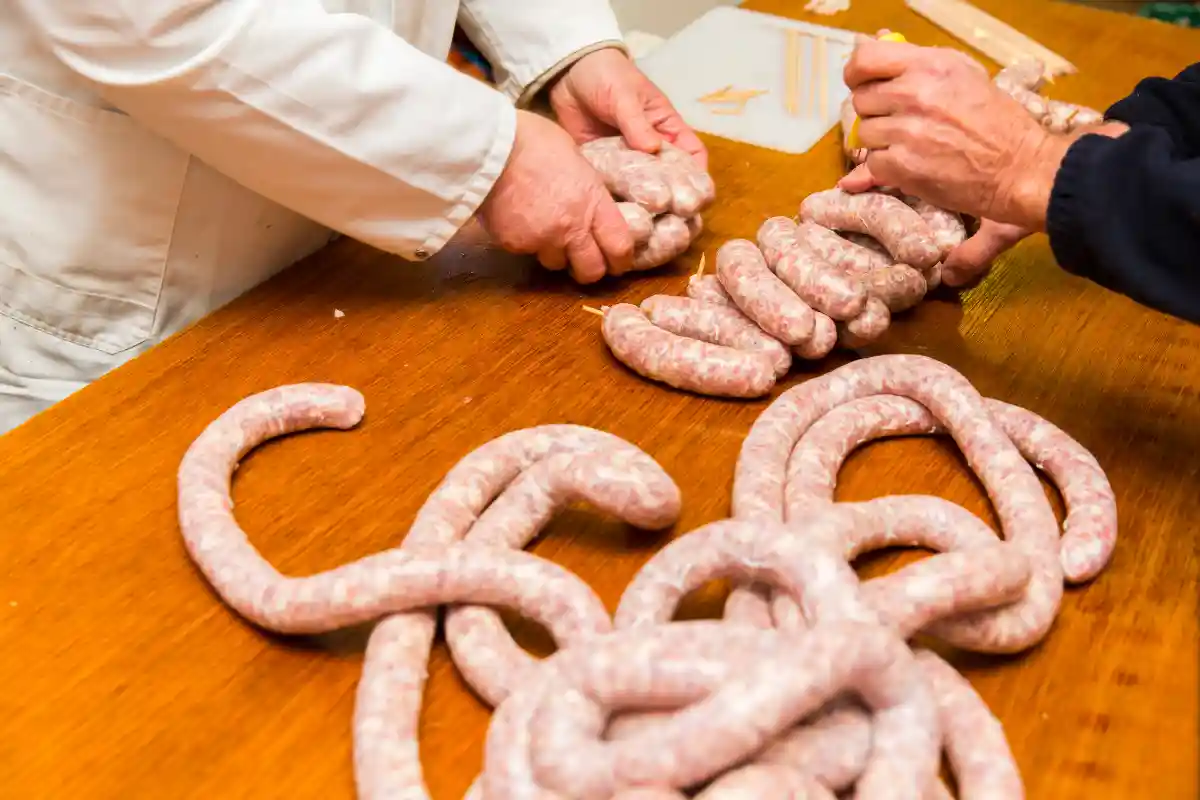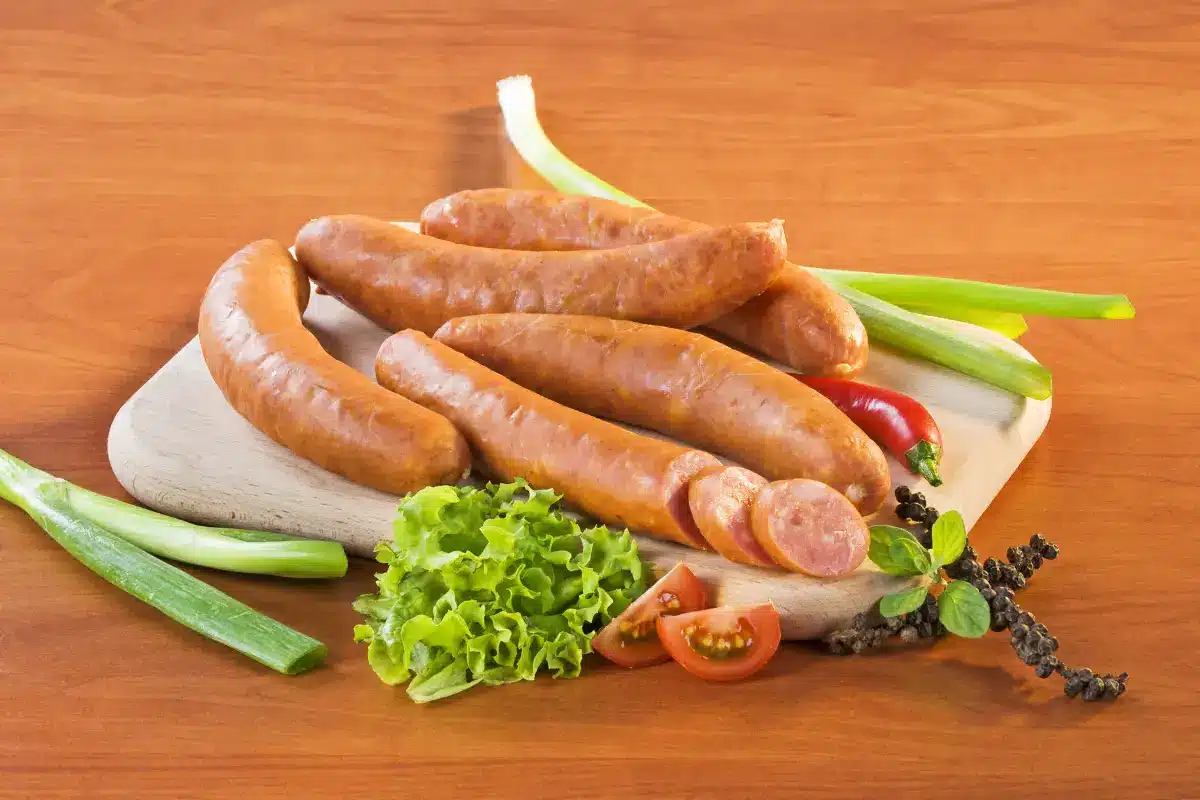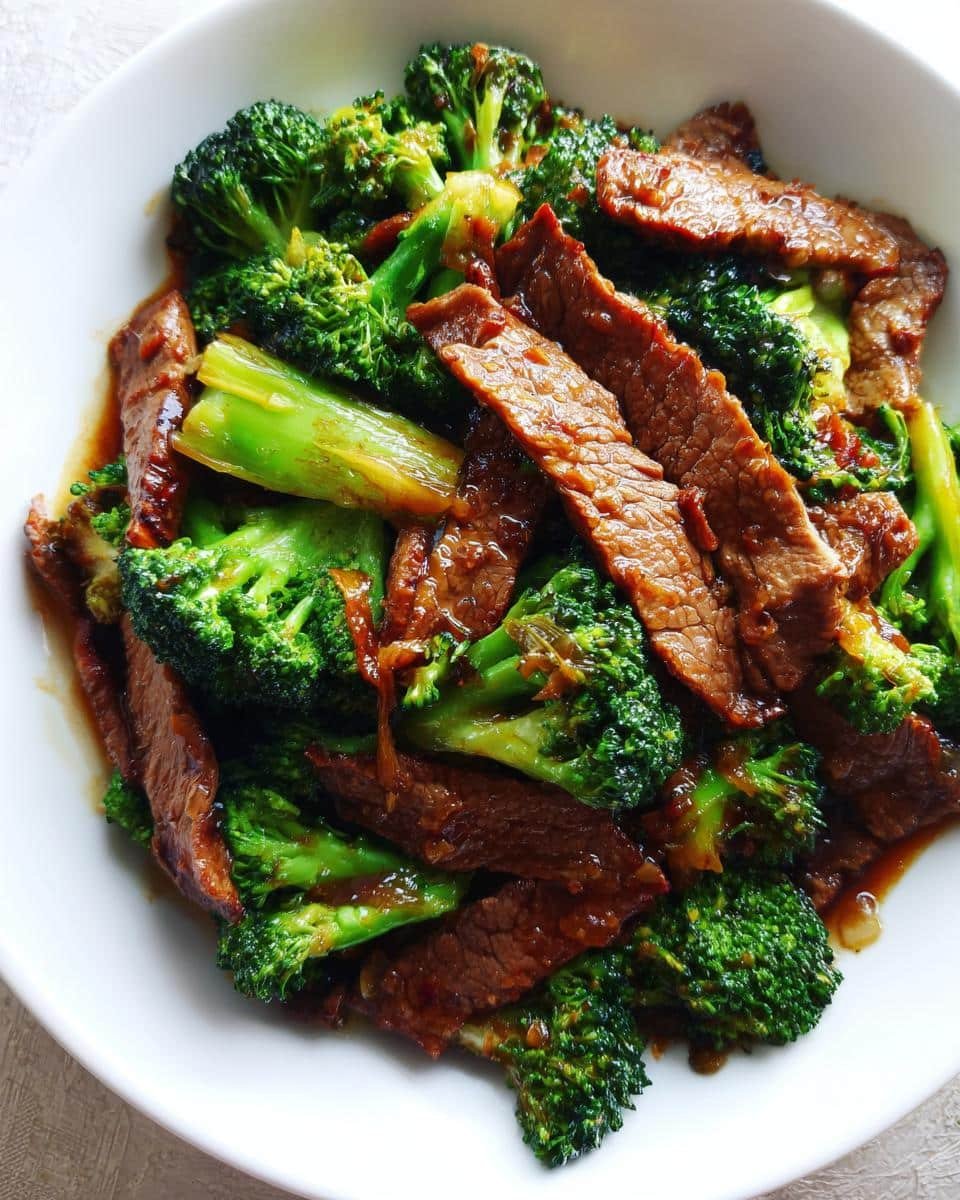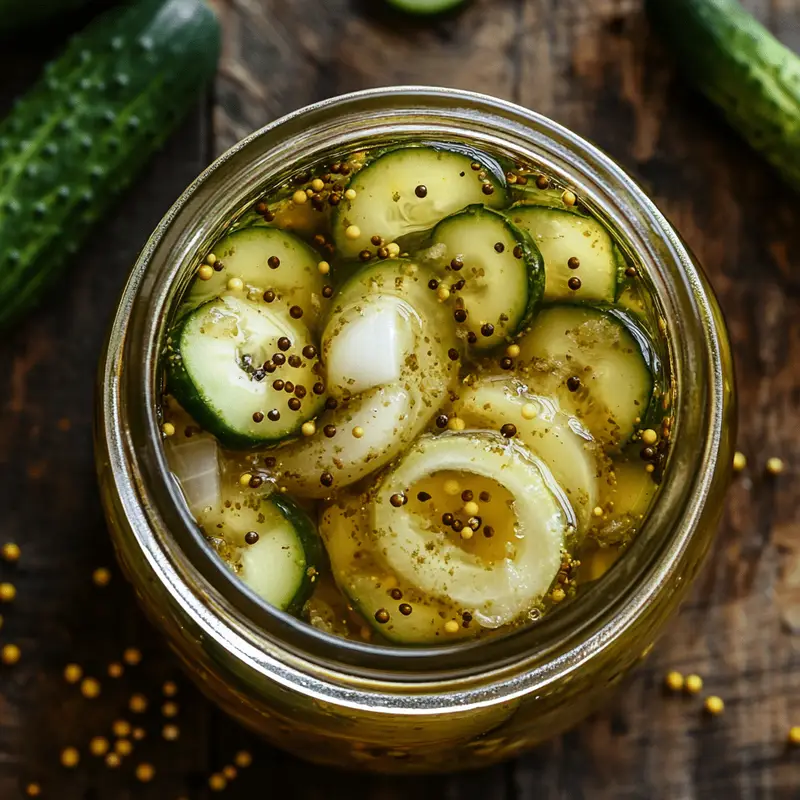In the culinary world, few dishes boast a heritage as rich and as flavorful as kielbasa. This Polish sausage has traversed borders, making its way into the hearts and dinner tables of people worldwide. But what exactly goes into making this beloved sausage? From its humble beginnings to its place in modern cuisine, we’re about to slice into the history, preparation, and cultural significance of kielbasa. So, buckle up, as we embark on a savory journey that promises to be as engaging as it is informative.
Part 1: Introduction to Kielbasa
Ah, kielbasa—the mere mention of it conjures up images of sizzling sausages, rich flavors, and communal dining. But before we dive fork-first into this culinary delight, let’s take a moment to peel back the casing and uncover its origins and what makes it tick, or rather, taste so darn good.
Brief The History of Kielbasa: Who Invented It?
Originating from the heart of Poland, kielbasa is not just a sausage; it’s a cultural icon. The word itself rolls off the tongue as smoothly as the sausage goes down when cooked to perfection. The term ‘kielbasa’ made its grand debut in Polish literature in the 18th century, but its roots go much deeper, entwined with the history and traditions of Polish nobility and common folk alike.
Imagine, if you will, a time when knights and noblemen roamed the lands, with kielbasa strapped to their belts. It wasn’t just a meal; it was a statement of sophistication and survival. Fast forward to today, and kielbasa has evolved from a nobleman’s snack to a staple in Polish households and beyond, with over 100 varieties tantalizing taste buds around the globe.
Kielbasa’s Global Popularity and Cultural Significance
From its smoky origins in Poland, kielbasa has embarked on a culinary conquest, capturing the hearts of food enthusiasts everywhere. Its versatility and unique flavor profile have made it a beloved ingredient in countless dishes, transcending cultural and geographical boundaries. Whether it’s grilled on a warm summer day or served alongside sauerkraut on a chilly evening, kielbasa brings people together, making it much more than just a sausage—it’s a symbol of unity and celebration.
So, as we set the table for our deep dive into the world of kielbasa, let’s savor the anticipation. We’re not just exploring a food item; we’re uncovering a story of tradition, innovation, and culinary excellence. Stay tuned, for this journey through the world of kielbasa is bound to be as enriching as it is delicious.
Part 2: The Making of Kielbasa

Diving deeper into the savory world of kielbasa, it’s time to explore what goes into making this delectable sausage. From the choice of meats to the blend of spices, every ingredient plays a pivotal role in crafting its distinctive flavor. Let’s unwrap the secrets behind the making of kielbasa.
Ingredients and Varieties
At its core, kielbasa is a symphony of meat, fat, and spices, all encased in a natural hog casing. The most traditional form of kielbasa leans heavily on pork, but don’t be surprised to find beef, veal, or even wild game joining the mix in various recipes. The magic, however, lies in the spices—garlic, marjoram, salt, and pepper are the usual suspects, each adding its unique note to the overall melody.
But the world of kielbasa is vast and varied. With over 100 types available, there’s a kielbasa for every palate. From the smoky depths of Wedzona to the fresh, garlicky zest of Biala, each variety offers a glimpse into the regions and traditions of Poland. It’s a culinary tour de force, inviting you to explore the rich tapestry of flavors that kielbasa has to offer.
The History of Kielbasa: Who Invented It?
The making of kielbasa is an art form, passed down through generations. It begins with the careful selection and grinding of meat, mixed with just the right amount of fat for that perfect, juicy bite. Next, the spices are added, each measured with precision to ensure the balance of flavors that kielbasa is renowned for.
The mixture is then lovingly stuffed into natural hog casings, a process that requires both skill and patience. But the journey doesn’t end there. The kielbasa is then smoked, a step that imbues it with its characteristic smoky flavor and tantalizing aroma. This process, varying from a few hours to several days, depending on the variety, is what truly sets kielbasa apart from other sausages.
Whether you’re grilling it to perfection or incorporating it into a hearty stew, kielbasa offers a world of culinary possibilities. Its rich history and complex flavors make it a beloved ingredient in kitchens around the world, inviting chefs and home cooks alike to experiment and innovate.
As we wrap up this section, it’s clear that the making of kielbasa is a testament to the traditions and craftsmanship of Polish cuisine. But more than that, it’s a celebration of flavor, a tribute to the ingredients and processes that come together to create something truly special. So, the next time you bite into a piece of kielbasa, take a moment to appreciate the journey it’s been on, from the fields and forests of Poland to your plate.
Part 3: Historical Context
Embarking further into our kielbasa exploration, we delve into the rich tapestry of its history. This isn’t just about a sausage; it’s a journey through time, where kielbasa emerges as a symbol of Polish culture and tradition. Let’s travel back and uncover the roots of this culinary marvel.
History of Kielbasa
The story of kielbasa begins in the annals of Polish history, not merely as a food item but as a cultural artifact. The first recorded mention of kielbasa dates back to the 18th century, but its origins are undoubtedly deeper, woven into the fabric of Polish life. Initially, it was a luxury, gracing the tables of nobility and knights, a testament to its esteemed status.
Imagine, if you will, medieval Poland, where kielbasa was more than sustenance; it was a symbol of prosperity and pride. Merchants carried it on long voyages, and knights bore it as a staple, a ready-to-eat meal that was both practical and prestigious. This era laid the groundwork for kielbasa‘s enduring legacy, embedding it firmly in the Polish culinary tradition.
How to Make Polish Kielbasa (Swojska)
Fast forward to today, and kielbasa holds a place of honor in Polish culture and cuisine. It’s a versatile staple, celebrated in festivals, family gatherings, and everyday meals. The evolution of kielbasa over the centuries reflects the changes in society, economy, and culinary practices, yet it remains a constant, a link to the past.
In Poland, kielbasa is not just a single type of sausage but a category encompassing a variety of flavors, textures, and cooking methods. Each region boasts its own specialty, from the garlic-infused Kielbasa Krakowska to the lean and flavorful Kielbasa Mysliwska. These varieties tell a story of regional diversity and culinary innovation, showcasing the adaptability and richness of Polish cuisine.
The historical journey of kielbasa is a fascinating tale of survival, adaptation, and celebration. It mirrors the resilience and creativity of the Polish people, who have nurtured and evolved this culinary tradition through centuries of change. Today, kielbasa continues to be a source of national pride and a symbol of Poland’s rich cultural heritage.
As we close this chapter on the historical context of kielbasa, we’re reminded of the power of food to connect us to our past, to each other, and to the wider world. Kielbasa is more than a sausage; it’s a story of tradition, innovation, and the enduring spirit of Polish culture.
Part 4: Nutritional Information

As we continue our savory journey through the world of kielbasa, it’s essential to pause and consider its nutritional profile. Understanding what goes into our bodies is just as important as enjoying the flavors that tantalize our taste buds. So, let’s slice into the nutritional aspects of kielbasa and see what makes it both a delicious and intriguing addition to our diets.
Nutritional Profile
Kielbasa, with its rich blend of meats and spices, offers a complex nutritional landscape. Primarily made from pork, it’s a source of high-quality protein, essential for building and repairing tissues in our bodies. However, like many sausages, kielbasa can also be high in fat and sodium, which means moderation is key for those watching their intake.
A typical serving of kielbasa provides a good amount of protein, alongside vitamins and minerals such as Vitamin B12, iron, and zinc. These nutrients are vital for maintaining energy levels, supporting immune function, and ensuring overall health. Yet, the sodium content in kielbasa can be a point of consideration, especially for individuals with dietary restrictions related to blood pressure or heart health.
Health Benefits and Concerns
While kielbasa brings flavor and tradition to the table, it’s important to balance its consumption within a varied and balanced diet. The protein in kielbasa is beneficial, but diversifying protein sources to include leaner options like chicken, fish, and legumes can contribute to a healthier dietary pattern.
For those concerned about fat and sodium, there are options available. Many producers offer kielbasa varieties with reduced fat and sodium levels, allowing you to enjoy the flavors you love without compromising your dietary goals. Incorporating kielbasa into dishes with plenty of vegetables can also help offset some of the sodium and fat, creating a more balanced meal.
In conclusion, while kielbasa is a delicious and culturally rich food, understanding its nutritional content helps us make informed choices about our consumption. Enjoying kielbasa as part of a diverse and balanced diet allows us to savor its flavors while taking care of our health. So, the next time you indulge in this Polish delicacy, remember that moderation and balance are key to enjoying its taste and nutritional benefits.
Part 5: Culinary Uses
Kielbasa, with its deep flavors and versatile nature, is not just a treat for the taste buds but also a culinary chameleon. It has the unique ability to shine in a variety of dishes, from traditional Polish recipes to innovative global cuisine. Let’s explore the culinary versatility of kielbasa and how it can elevate everyday meals into something truly special.
Kielbasa Recipes
One of the most remarkable aspects of kielbasa is its ability to adapt to different culinary contexts. In Poland, it’s often enjoyed simply grilled or fried, with a side of mustard or horseradish, allowing its smoky flavor to take center stage. However, kielbasa also plays a starring role in many traditional dishes, such as Bigos (Hunter’s Stew), a hearty mix of kielbasa, sauerkraut, and various meats, simmered to perfection.
Beyond Polish borders, kielbasa has found its way into cuisines around the world, adding its unique flavor to a myriad of dishes. In the United States, it’s a popular addition to comfort foods like kielbasa and cabbage, where its smoky notes complement the sweetness of cooked cabbage. Kielbasa also makes a fantastic ingredient in stews, soups, and casseroles, infusing them with its rich, meaty essence.
Tips for Cooking and Serving
Cooking Kielbasa Tips is both an art and a pleasure. For those looking to bring out the best in their kielbasa, here are a few tips:
- Grilling: To achieve that perfect char and smoky flavor, grill kielbasa over medium heat, turning frequently to ensure even cooking.
- Sautéing: Sliced kielbasa can be sautéed with onions, peppers, or other vegetables for a quick and flavorful addition to any meal.
- Boiling: For a traditional Polish touch, boil kielbasa before grilling or frying. This method helps to tenderize the sausage and lock in its flavors.
When serving kielbasa, consider pairing it with sides that complement its richness. Sauerkraut, mashed potatoes, or roasted vegetables not only balance the flavors but also add a nutritional boost to your meal.
In wrapping up this section, it’s clear that kielbasa‘s culinary potential is limited only by one’s imagination. Whether you’re sticking to traditional recipes or experimenting with new combinations, kielbasa promises to add depth and delight to your cooking adventures. So, why not let kielbasa inspire your next culinary creation? The possibilities are as endless as they are delicious.
Part 6: Interesting Facts
As we continue to unravel the layers of kielbasa, it becomes evident that this Polish sausage is not just a culinary delight but also a repository of fascinating stories and facts. Let’s indulge our curiosity and explore some interesting tidbits about kielbasa that might surprise even the most seasoned food enthusiasts.
Unique Aspects of Kielbasa
Kielbasa is steeped in history and tradition, each variety telling its own story. For instance, the Kielbasa Lisiecka, produced in the Lesser Poland region, has been awarded the Protected Geographical Indication (PGI) status by the European Union. This distinction is a testament to its unique regional characteristics and traditional production methods, highlighting the cultural significance of kielbasa beyond its taste.
Another intriguing fact is the role of kielbasa in Polish celebrations and holidays. During Easter, kielbasa is a central component of the Święconka, a basket of food blessed in churches on Holy Saturday. This tradition underscores the sausage’s integral role in Polish cultural and religious practices, symbolizing joy, abundance, and the coming together of families.
Lesser-known Facts about Kielbasa Production and Consumption
Did you know that the traditional smoking process of kielbasa not only imparts a distinctive flavor but also serves as a preservation method? Historically, smoking was essential for extending the shelf life of meats, a practice that has evolved into a culinary art form, with kielbasa as one of its finest examples.
Moreover, the global appeal of kielbasa has led to the creation of festivals and competitions dedicated to celebrating this beloved sausage. These events not only showcase the diverse varieties of kielbasa but also bring together communities to share in the joy of cooking, tasting, and appreciating this culinary treasure.
In closing this section, it’s clear that kielbasa is more than just a sausage; it’s a symbol of heritage, a bridge between past and present, and a source of communal pride and joy. The stories and facts surrounding kielbasa enrich our understanding and appreciation of this culinary marvel, inviting us to explore and savor its flavors with a deeper sense of connection and wonder. So, the next time you enjoy a bite of kielbasa, remember, you’re partaking in a tradition that spans centuries and continents, a tradition that continues to evolve and inspire.
Part 7: FAQs
In our journey through the world of kielbasa, we’ve explored its origins, preparation, nutritional content, culinary uses, and some intriguing facts. Yet, there may still be questions simmering in the minds of curious food enthusiasts. Let’s address some frequently asked questions about kielbasa to satisfy our hunger for knowledge.
Frequently Asked Questions
- Can kielbasa be eaten without cooking?
Typically, kielbasa comes pre-smoked, meaning it’s already cooked and safe to eat straight from the package. However, many prefer to heat it through grilling, frying, or boiling to enhance its flavor and texture. - What’s the difference between kielbasa and regular sausage?
While “sausage” is a broad term encompassing a variety of meat products, kielbasa specifically refers to a Polish sausage known for its distinctive garlic flavor, smoky aroma, and coarse texture. The term kielbasa also covers a wide range of sausage types within Polish cuisine, each with its unique ingredients and preparation methods. - How should kielbasa be stored?
Unopened kielbasa can be stored in the refrigerator until its sell-by date. Once opened, it should be consumed within a week, or it can be frozen for up to two months without losing its quality. - Is kielbasa healthy?
Like many processed meats, kielbasa is high in fat and sodium, which can be a concern for individuals with certain dietary restrictions. Enjoying kielbasa in moderation, as part of a balanced diet, is key to incorporating it into a healthy lifestyle. - Are there different ways to cook kielbasa?
Absolutely! Kielbasa is incredibly versatile. It can be grilled, fried, boiled, or baked. It’s also a popular addition to stews, soups, and casseroles, where it adds a rich, smoky flavor.
In wrapping up this FAQ section, we hope to have shed light on some of the common queries surrounding kielbasa. This Polish sausage is not just a food item; it’s a cultural icon, steeped in tradition and beloved by many. Whether you’re a long-time fan or a curious newcomer, there’s always something new to learn and appreciate about kielbasa. So, go ahead, indulge in its flavors, and let the rich history and culinary versatility of kielbasa inspire your next meal.
conclusion
Having ventured through the multifaceted world of kielbasa, from its rich historical roots to its diverse culinary applications and nutritional considerations, we’ve uncovered the essence of this beloved Polish sausage. Kielbasa is more than just a food item; it’s a cultural emblem that embodies the traditions, flavors, and communal spirit of Poland. Through each part of our exploration, we’ve seen how kielbasa transcends mere sustenance, becoming a symbol of heritage and a bridge connecting generations.
As we conclude our journey, it’s clear that kielbasa holds a special place not only in Polish cuisine but also in the hearts of those who appreciate the art of food. Its versatility in cooking, the depth of flavor, and the stories woven into its creation offer endless opportunities for culinary exploration and enjoyment. Whether you’re savoring it within a Traditional Kielbasa Pairings, or experimenting with it in new, innovative recipes, kielbasa brings warmth, flavor, and a sense of connection to the table.
In embracing kielbasa, we embrace a world of culinary richness and cultural significance. It invites us to explore, to taste, and to celebrate the enduring legacy of Polish cuisine. So, as we move forward, let’s carry with us the appreciation for kielbasa‘s unique qualities and the stories it tells, allowing them to inspire our cooking and enrich our meals.
Thank you for joining me on this flavorful journey through the world of kielbasa. May your culinary adventures be as enriching and delicious as the topics we’ve explored together. Here’s to many more discoveries on the plate and beyond!



